Rust Programming
Ownership
Stack and Heap
Understanding the roles of the stack and heap is essential for efficient memory management in Rust. In this guide, we explore how each memory region works, their key characteristics, and provide illustrative Rust examples.
Understanding the Stack
The stack is a region of memory that stores values in a Last-In-First-Out (LIFO) manner. It offers fast, efficient storage for short-lived data and function calls. Each time a function is called, a new stack frame is created, and when the function returns, that frame is removed.
Some key characteristics of stack memory include:
- Fast allocation and deallocation: Memory management is as simple as moving the stack pointer.
- Fixed size at compile time: The size of data (e.g., integers, floats) must be known when compiling.
- Automatic cleanup: When a function exits, its stack frame is automatically removed.
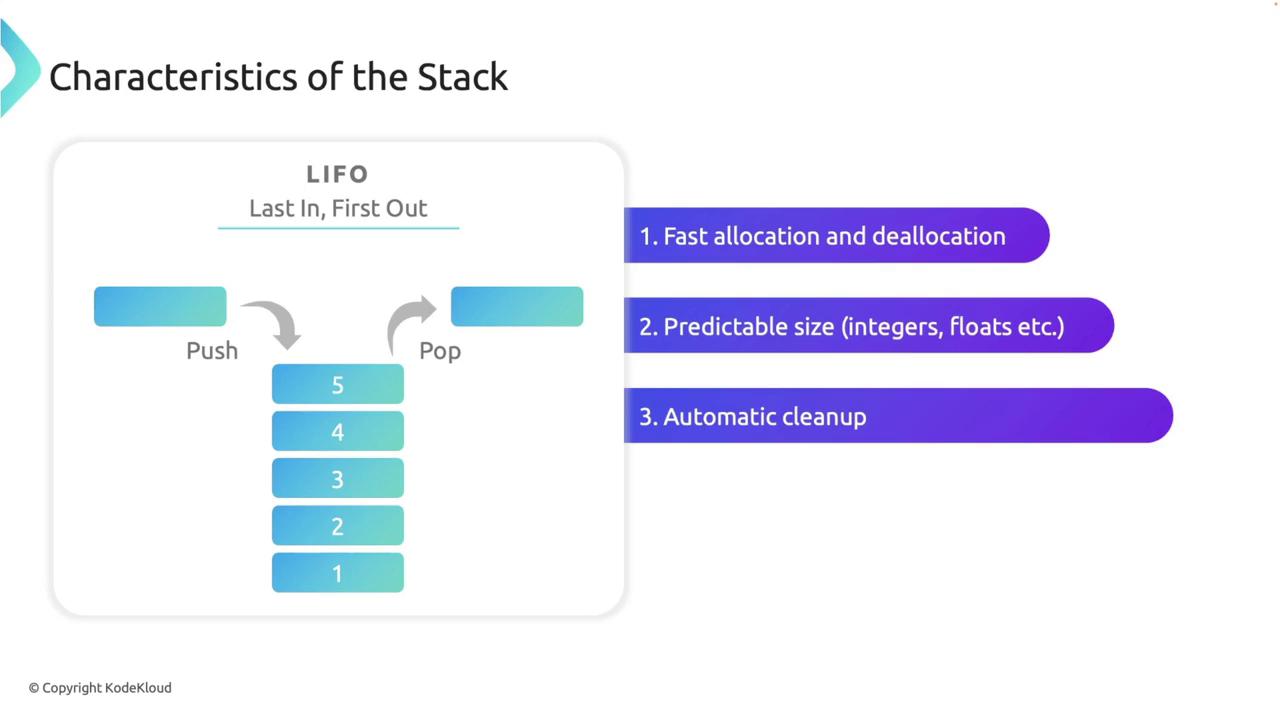
Consider the following Rust example that demonstrates how stack memory is used:
fn main() {
let x = 5; // x is pushed onto the stack
let y = x; // y is pushed onto the stack as a copy of x
println!("x: {}, y: {}", x, y); // Both x and y are valid and accessible
} // x and y go out of scope and are popped off the stack
Note
In Rust, simple types like integers are copied rather than transferred, meaning that each variable gets its independent allocation on the stack.
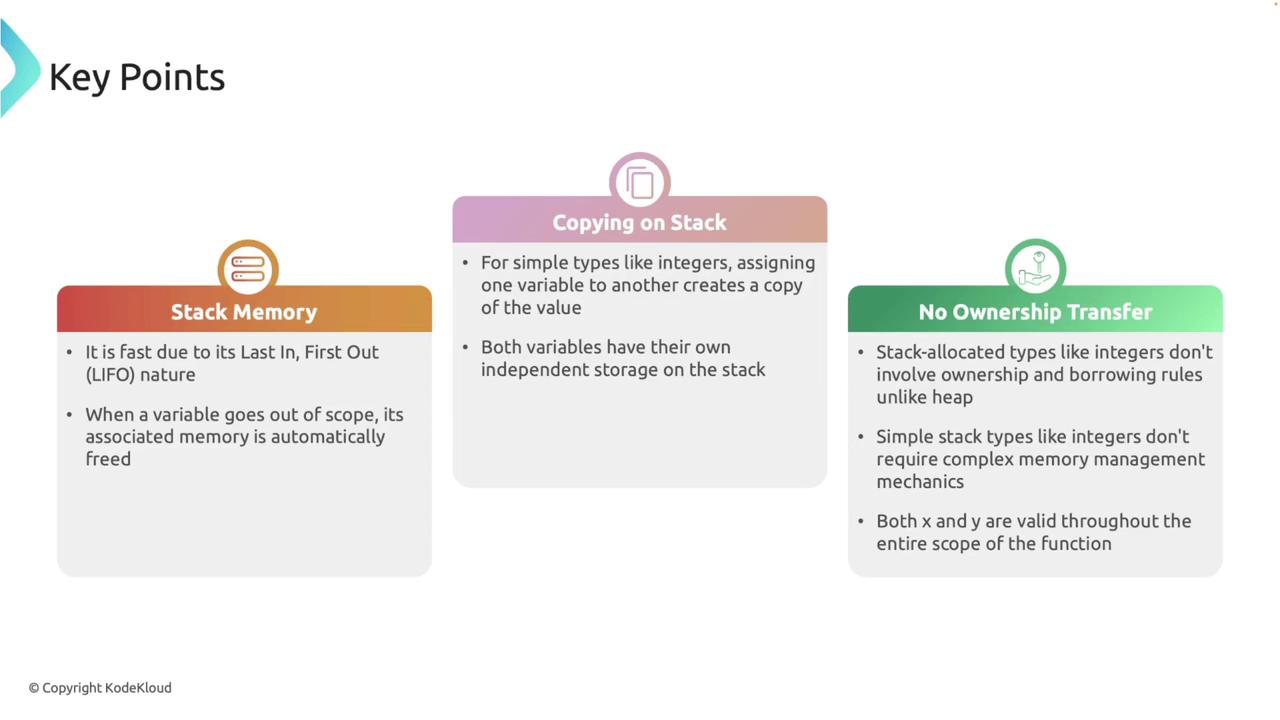
Understanding the Heap
The heap is used for managing data that requires dynamic memory allocation. Unlike the stack, the heap is more flexible in size, and memory is allocated and freed manually, which can affect performance.
Key characteristics of heap memory are:
- Dynamic size: The size of the allocated data is determined at runtime.
- Explicit management: Allocation and deallocation require explicit instructions, adding complexity.
- Flexible lifetime: Data on the heap can persist longer than the function that created it.
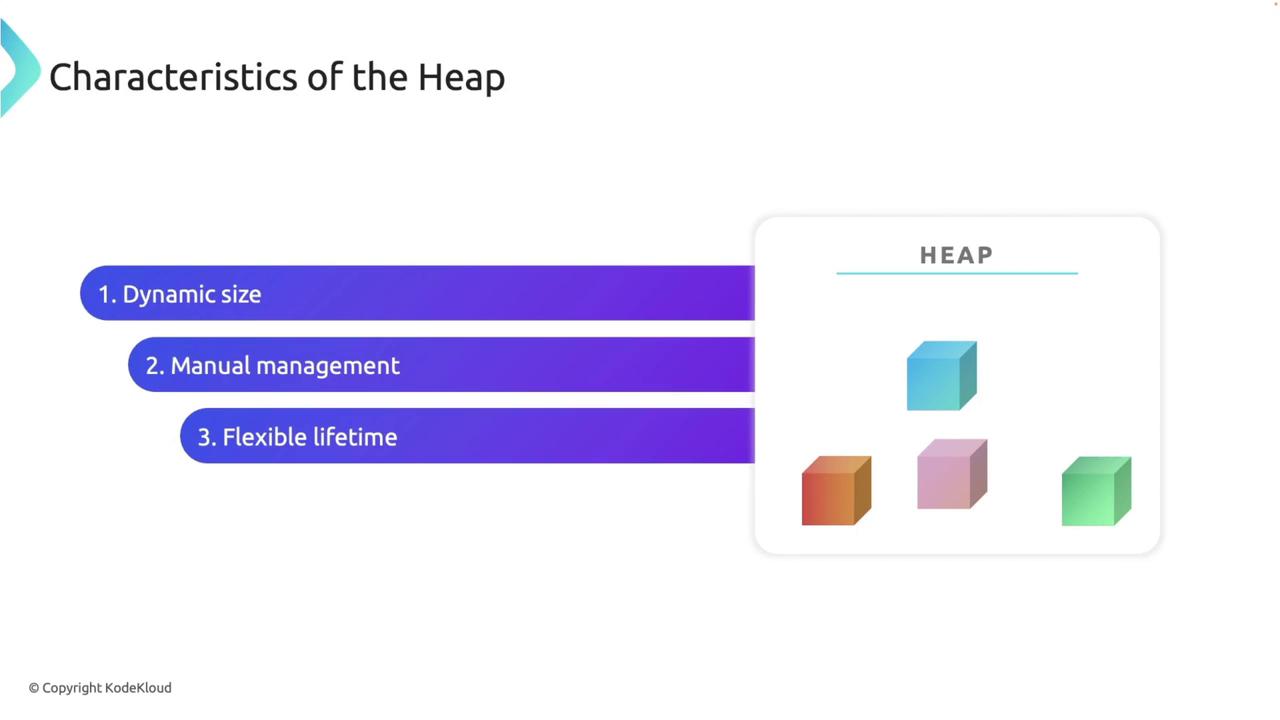
The following Rust example demonstrates a common use-case with heap-allocated memory:
fn main() {
let s = String::from("hello"); // s is allocated on the heap, with a pointer to its memory
println!("{}", s); // s is valid and accessible
} // s goes out of scope and Rust automatically deallocates the heap memory
Note
Rust's ownership system helps manage heap memory by automatically freeing it when it goes out of scope, thereby reducing the chances of memory leaks.
Comparing Stack and Heap Memory
A solid understanding of Rust's memory management begins with recognizing the differences between stack and heap memory. The following table summarizes the key differences:
| Aspect | Stack | Heap |
|---|---|---|
| Allocation | Fast (LIFO) | Slower, requires manual allocation/deallocation |
| Size | Fixed (set at compile time) | Dynamic (grows at runtime within system limits) |
| Lifetime | Automatic cleanup when out of scope | Flexible, requires explicit management |
| Usage | Temporary data and function calls | Complex, variable-sized data like Strings and Vectors |
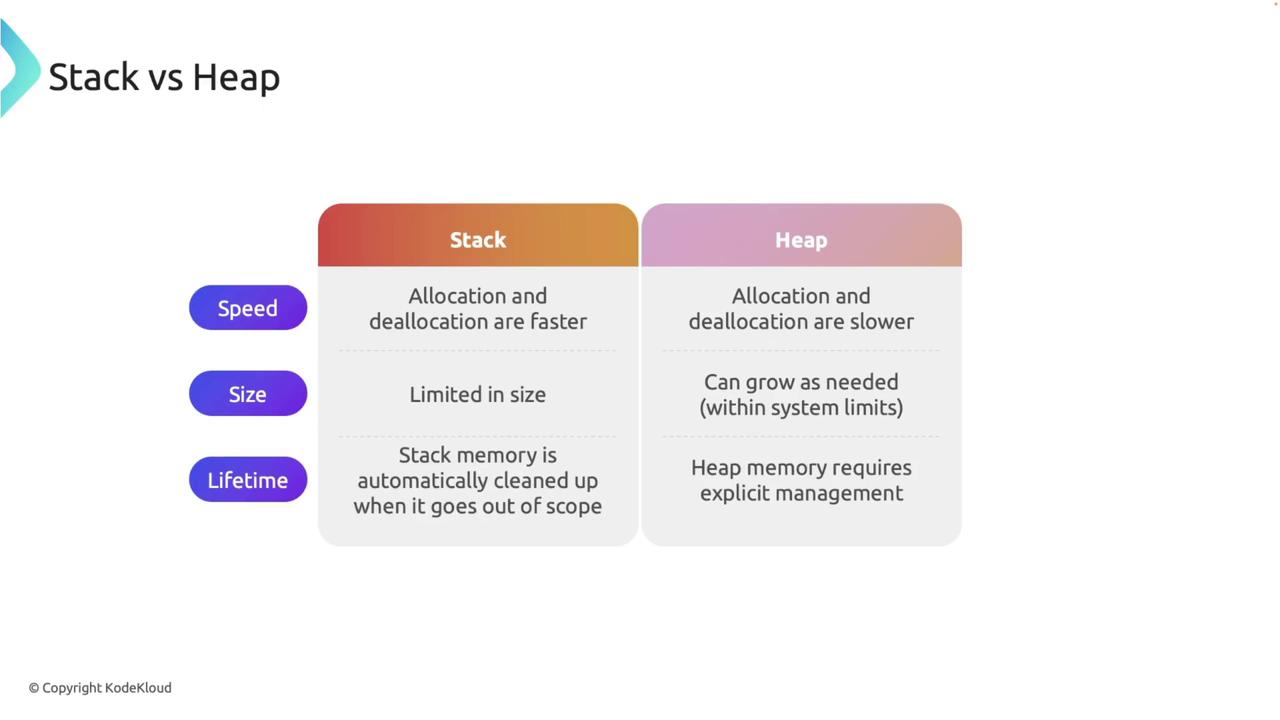
Effective memory management in Rust involves a careful balance between using stack and heap memory. By understanding their distinct characteristics, you can write code that is both efficient and safe.
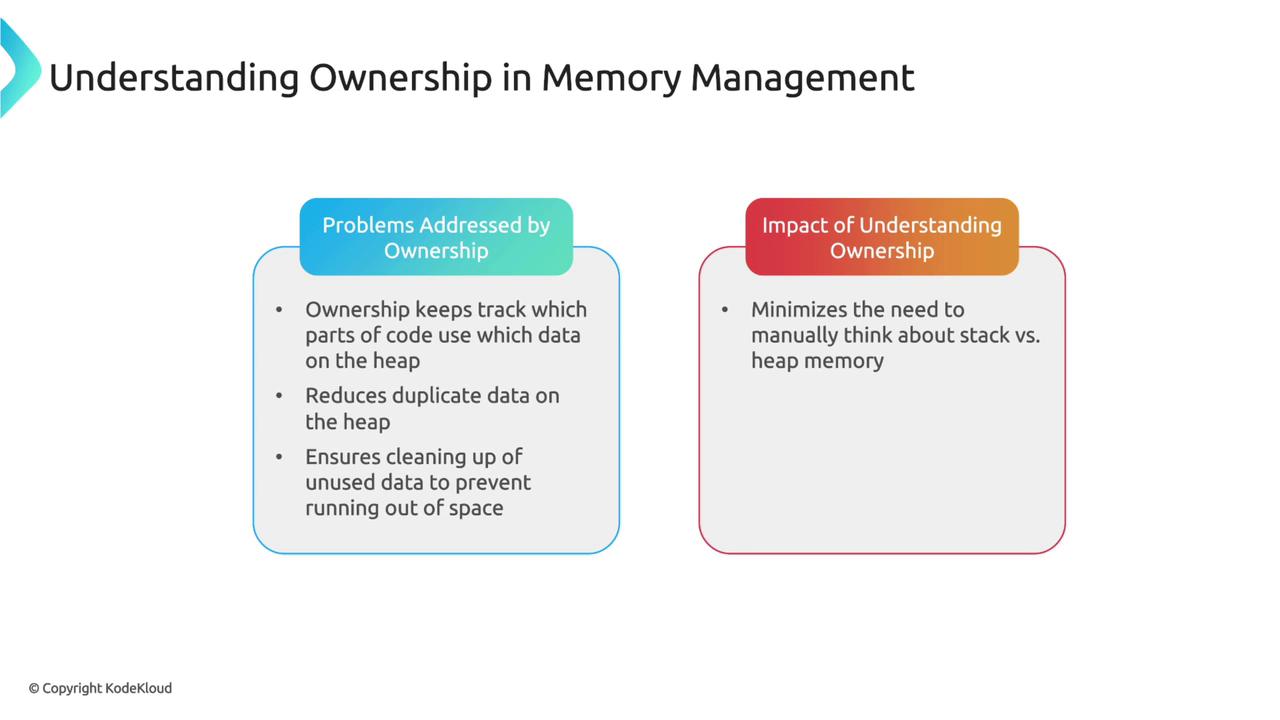
By grasping these core concepts, you can leverage Rust's powerful memory management system to build safe and high-performance applications.
Watch Video
Watch video content